Best Modern Landscape Design Plans
Introduction
Modern landscape design combines functionality, beauty and sustainability with a focus on clean lines and minimal details. In this way, it reflects the contemporary architectural style by flawlessly combining indoor and outdoor spaces. It creates an environment that is both visual and functional by emphasizing the balance between natural and artificial elements. As urban space shrinks, landscape design is constantly shifting to smaller areas, improving aesthetics and performance. Many of the designs incorporate eco-friendly practices, making it both attractive and environmentally responsible.
Minimalist Approach
The minimalist approach in modern landscape design is based on the principle of “less is more”. This style, which uses fewer, carefully selected elements, creates a quiet and orderly atmosphere. He mostly uses a limited colour palette, opting for neutral tones like green and brown. Each base serves a different purpose, enhancing the overall simplicity and elegance. This approach not only reduces visual impact but also simplifies maintenance, making it ideal for everyday life.
Use of Geometric Shapes
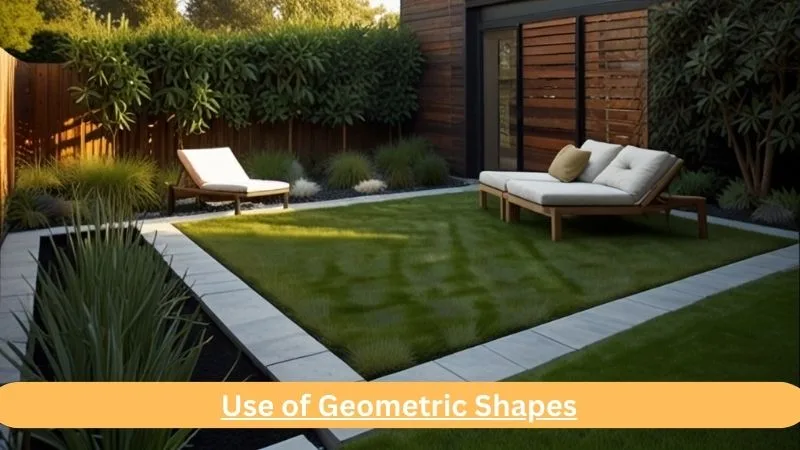
Geometric shapes are important in modern landscape design for structure and visual interest. Squares, rectangles, and circles are often used to define areas such as paths, garden beds, and seating areas. These images bring harmony and order to the design, making the landscape beautiful. The use of geometric information can create a good and useful environment, making the best use of space, especially in small gardens.
Also Read Modern Landscaping Ideas for Front of House
Integration of Natural Elements
Natural components like rocks, water features, and native plants are an important part of modern landscape design. These products enhance the beauty of the garden and support biodiversity and sustainability. Water features like a lake or pond add tranquillity and movement, while rocks provide texture and depth. Native plants are popular for their adaptability and low maintenance, creating a balanced, environmentally friendly outdoor environment that conveys a sense of connection to the environment.
Sustainable Practices
The core principle of contemporary landscape design is sustainability and reflects a commitment to environmental responsibility. This includes the use of drought-tolerant plants, irrigation systems, and recycled materials. Drought-tolerant plants reduce water use, while water-efficient plants, such as irrigation systems, increase water efficiency. Materials that are locally or recycled have a smaller environmental impact. These sustainable practices make landscaping environmentally friendly and cost-effective in the long run.
Outdoor Living Spaces
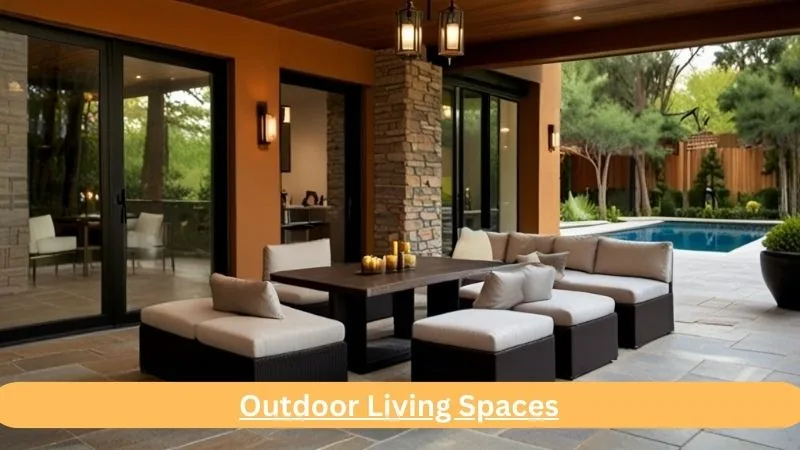
Modern landscaping often includes an outdoor area to increase the functionality of the home. Patios, terraces and outdoor kitchens provide space for relaxing and entertaining. These spaces are designed to be both functional and beautiful, providing comfort and elegance. Complete with comfortable chairs and dining areas, these rooms become the perfect place for meetings and family events, improving the overall lifestyle by bringing high comfort to the interior.
Innovative Lighting Solution
Lighting is indispensable for modern landscapes. It improves the environment and increases security. LED lights, solar-powered fixtures and lighting fixtures highlight the garden and create an inviting atmosphere. While LED lighting provides energy savings, solar energy usage options reduce energy consumption. Lights can add depth and drama to a landscape by illuminating trees, statues or buildings, making the garden beautiful and usable even after dark.
Functional and Aesthetic Plantings
In modern landscape design, plants are selected for function and beauty. Ornamental grasses, succulents and architectural plants provide structure and interest year-round. These plants were chosen for their versatility and low maintenance. Provide the plants with the water and light they need to keep the garden healthy and manageable. Native plants attract local wildlife, increase biodiversity, and create a beautiful, environmentally friendly environment.
Hardscape Elements
Hardscape elements such as paths, retaining walls, and seating areas are important in modern landscape design. These features add style and functionality, creating an open space for a variety of activities. Materials such as stone, metal, and wood are used for their durability and modern beauty. The path directs the movement of the garden and allows the wall to control the slope, and the seating area helps create a harmonious and functional environment by providing relaxation.
Indoor-Outdoor Connection
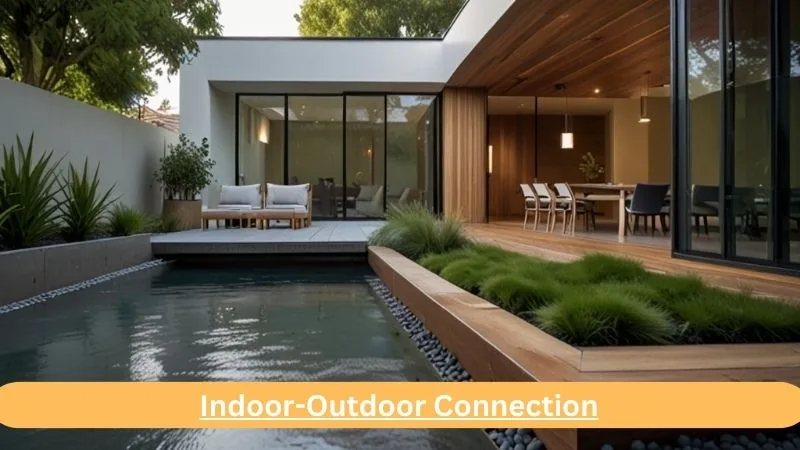
The essence of modern landscape design is creating smooth transitions between outdoor and indoor areas. Windows, sliding glass doors, and matching floor materials help blend the spaces. Use similar colours and materials indoors and outdoors to create a sense of unity that will make the garden feel like an extension of the home. This connection strengthens the sense of place and brings the beauty of the place to daily life.
Custom Features and Art Installations
Customized features like fire pits, pergolas and artwork add a unique touch to the modern landscape. These themes follow the main themes and reflect the presenter’s style. A fire pit provides warmth and comfort, pergolas provide shade and support climbing plants, and artwork adds creativity and character. These personalization features make the garden unique and personal.
Maintenance and Longevity
Modern landscape design refers to low-cost solutions to ensure longevity and easy maintenance. Maintenance can be reduced by using hardy plants, automatic watering systems and sustainable materials. Hardy plants are hardy and need little water, mechanical systems provide good watering, and durable materials reduce the need for frequent maintenance. These treatments create a beautiful, functional space that’s also easy to manage over time.
Conclusion
Modern landscape design expertly blends simplicity and functionality and uses sustainability to design stunning and useful outdoor areas. By combining small details, geometric shapes and natural elements, homeowners can enjoy a comfortable and beautiful environment. The combination of sustainable practices and low-cost solutions ensures that these landscapes are both environmentally friendly and cost-effective. Customizable features and new lighting add personality to the garden and increase its usefulness. Overall, modern landscaping has a timeless and versatile approach to outdoor living that is suitable for everyday living.
Modern Landscape Design Plans – FAQs
Q1. What is the purpose of landscaping?
Ans: Landscape plays an important role in today’s world. We use landscaping for our home, workplace and beauty. We use it to create freedom and comfort. It also accomplishes environmental protection.
Q2. What defines a border landscape?
Ans: Borders differ from beds in borders and have vertical elements such as walls, fences or hedges that define one or more sides of the boundary, forming the back, front and side of the garden. These details are very important when searching for designs that meet your needs from books or online.
Q3. Which type of landscape edging is best?
Ans: Metal landscape edging is generally the first choice in modern landscaping. It is made of various materials and is durable and long-lasting. Metal edges are also low maintenance and require little maintenance to prevent repairs.



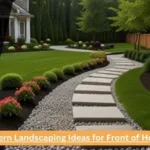
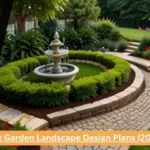
Leave a Reply